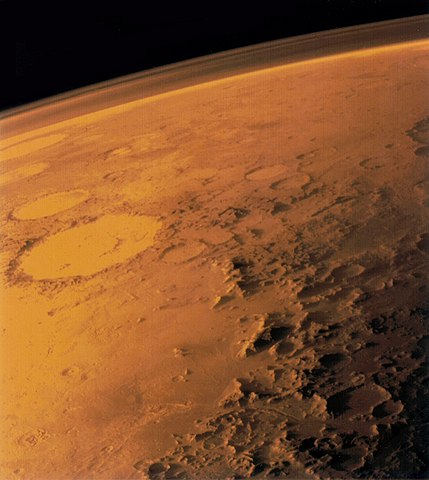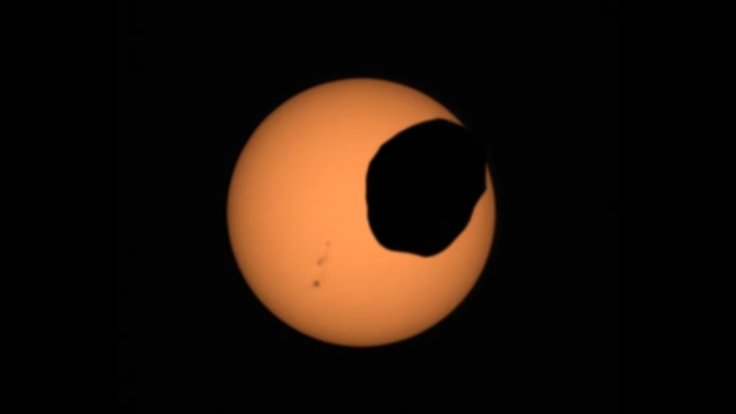The Perseverance Rover shot a fascinating solar eclipse of Phobos, one of Mars' two moons crossing the face of the sun. The footage was captured on 2 April, the 397th Martian day by Perseverance's hi-tech Mastcam-Z camera.
The Perseverance Rover team announced the eclipse by tweeting the footage. They wrote that this occurrence would help the scientists in better understanding, "the Martian moon's orbit and how its gravity affects the interior of Mars, including its crust & mantle".

The solar eclipse went on for some 40 seconds and remains the 'most zoomed-in, highest-frame-rate observation of a Phobos solar eclipse' to be taken from the surface of Mars, as reported by United Press International (UPI). Phobos, also referred to as Mars' potato shaped moon, is approximately 157 times smaller than Earth's Moon and hence the eclipse observed was much shorter than a usual one with Earth's Moon.
Rachel Howson part of the Mastcam-Z operating team was elated by the captured footage and said, "I knew it was going to be good, but I didn't expect it to be this amazing. It feels like a birthday or holiday when they arrive. You know what's coming, but there is still an element of surprise when you get to see the final product."
Incredible video of an annular solar eclipse by Phobos seen from the Mars surface by NASA’s Perseverance rover.
— Xavi Bros (@Xavi_Bros) April 20, 2022
Wonderful !
It’s clearly visible the shape of Phobos, one of the two moons of Mars.pic.twitter.com/hxmVKKI59u
Rowson added later that even though Perseverance initially sends lower-resolution thumbnails that provide an impression of the images to come, the team was amazed by the full-resolution versions.
Mark Lemmon, a planetary astronomer with the Space Science Institute in Boulder, who has coordinated and put together almost all of Phobos observations, says that the color of the video captured also is one the aspect that deserves appreciation. "You can see details in the shape of Phobos' shadow, like ridges and bumps on the moon's landscape," said Mark "You can also see sunspots. And it's cool that you can see this eclipse exactly as the rover saw it from Mars."
A solar filter on the rover's camera allowed Mastcam – Z to easily capture the little bumps and ridges on the surface of the moon, as the filter decreases the intensity of the light when it falls on it.

Phobos exerts small tidal forces on Mars' surface when it moves around in the planet, these forces have had a gradual impact over Phobos' orbit. The result of the changes brought forth by this impact are predicted to be used by geophysicists in order to comprehend the 'pliability of the Red Planet's interior' along with it disclosing more information regarding the materials that exist inside the crust and the mantle, as explained by NASA's Jet Propulsion Laboratory.
While scientists have acknowledged that Phobos' survival rate is not much because the moon is continuously moving closer to the Red Planet's surface and is fated to crash in the million years to come. However, the eclipse footages in the last two decades have made it easier for the scientists to redefine their perception regarding Phobos' slow death spiral.
NASA rovers Spirit and Opportunity had captured the first time-lapse photos of Phobos in the middle of a solar eclipse in 2004.









